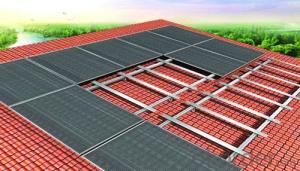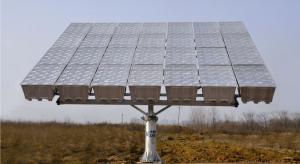Floating Solar Mounting System for Roof System - Plain Tile
- Loading Port:
- China Main Port
- Payment Terms:
- TT OR LC
- Min Order Qty:
- -
- Supply Capability:
- -
OKorder Service Pledge
OKorder Financial Service
You Might Also Like
Roof System - plain tile
Die verschiedenen Komponenten für Schrägdächer - passgenau und für jede Situation maßgefertigt.
Die umfassende Auswahl an unterschiedlichen Komponenten und Systemen ermöglicht es,
mit Schletter-Systemen nahezu jede Modulkonfiguration auf jedem Dach zu befestigen.
Durch unsere hochwertigen und durchdachten Komponenten erzielen Sie schnelle Montagezeiten und verlässliche Haltbarkeit mit statischem Nachweis.
Bei der Auswahl der für Ihr Dach am besten geeigneten Variante haben Sie die Wahl zwischen einer dachparallelen und einer aufgeständerten Lösung.
Kreuzschienensystem für ungünstige Befestigungspunkte
Große Spannweiten möglich
Oftmals weniger Befestigungspunkte möglich
Genaue Einhaltung der Klemmbereiche des Moduls
Flexibel in der Montage
Kombinierbar mit allen Schletter-Systembauteilen
Aus günstigen Standard-Schienen aufzubauen
- Q: Can a solar mounting system be installed on a sports field or stadium?
- Yes, a solar mounting system can be installed on a sports field or stadium.
- Q: What are the advantages of a ground-mounted solar mounting system?
- Some advantages of a ground-mounted solar mounting system include: 1. Maximum solar exposure: Ground-mounted systems can be positioned to optimize solar exposure, ensuring maximum sunlight absorption throughout the day. They can be angled and positioned for the ideal tilt and orientation, increasing energy production. 2. Scalability: Ground-mounted systems can be easily expanded or modified to accommodate additional solar panels. This makes them a suitable choice for residential, commercial, or utility-scale installations, allowing for future growth or adjustments as needed. 3. Accessibility for maintenance: Ground-mounted systems are easily accessible for routine maintenance and cleaning. This simplifies the inspection, cleaning, and repair processes, reducing downtime and increasing system efficiency. 4. Flexibility in location: Unlike rooftop installations, ground-mounted systems can be installed in various locations, including areas with limited roof space or shading issues. They can also be installed in open fields or on uneven terrain, making them suitable for a wide range of geographical locations. 5. Reduced rooftop load: By installing solar panels on the ground, the weight and load on the roof are eliminated, which can be beneficial for buildings with structural limitations or aging roofs. This reduces the risk of damage and the need for costly roof reinforcements. 6. Cost-effectiveness: Ground-mounted systems often have lower installation costs compared to rooftop systems since they require less labor and structural considerations. Additionally, they can be more cost-effective in terms of maintenance and repairs, as they are easily accessible. Overall, ground-mounted solar mounting systems offer increased flexibility, accessibility, and efficiency, making them a preferred option in many solar installations.
- Q: Are there any specific requirements for installing a solar mounting system on a rooftop with rooftop safety rails?
- Yes, there are specific requirements for installing a solar mounting system on a rooftop with rooftop safety rails. These requirements include ensuring that the mounting system is compatible and can be securely attached to the safety rails without compromising their effectiveness. Additionally, the system should be installed in a way that does not obstruct access to the safety rails and allows for regular maintenance and inspection of both the solar panels and the safety rails. It is also important to comply with local building codes and regulations regarding rooftop installations and safety measures.
- Q: Can a solar mounting system be installed on a school or educational institution?
- Yes, a solar mounting system can definitely be installed on a school or educational institution. In fact, many schools and educational institutions have already adopted solar energy systems to reduce their carbon footprint and save on energy costs. Installing solar panels on rooftops or using ground-mounted systems can provide a reliable and renewable source of electricity, while also serving as an educational tool to teach students about sustainability and the importance of clean energy.
- Q: Can a solar mounting system be used on concrete roofs?
- Yes, a solar mounting system can be used on concrete roofs. Concrete roofs provide a sturdy and stable surface for installing solar panels. The mounting system can be securely fastened to the concrete roof using appropriate techniques and fixtures.
- Q: Can a solar mounting system be installed on a manufacturing or industrial plant?
- Yes, a solar mounting system can be installed on a manufacturing or industrial plant. In fact, many manufacturing and industrial plants are adopting solar energy systems to reduce their carbon footprint and lower their energy costs. These solar mounting systems can be installed on rooftops, parking lots, or even as ground-mounted systems depending on the available space. The installation of solar panels on manufacturing or industrial plants not only helps in generating clean energy but also demonstrates a commitment to sustainability and renewable energy sources.
- Q: What is a high-profile template system?
- Large template support system refers to the construction of the construction site concrete component template support height of more than 8m, or erection span of more than 18m, or the total load of more than 15kN / ㎡, or concentrated line load greater than 20kN / m template support system.
- Q: Can a solar mounting system be used on uneven ground surfaces?
- Yes, a solar mounting system can be used on uneven ground surfaces. There are adjustable and versatile solar mounting systems available that can accommodate various terrain types and uneven ground surfaces. These systems often feature adjustable legs or leveling mechanisms to ensure proper alignment and stability of the solar panels, even on sloped or uneven ground. This allows for the effective installation of solar panels in diverse landscapes, maximizing the potential for renewable energy generation.
- Q: What is the weight capacity of a solar mounting system?
- The weight capacity of a solar mounting system can vary depending on the specific design and manufacturer. However, most standard solar mounting systems are designed to support the weight of the solar panels, which typically range from 30 to 50 pounds each.
- Q: Can a solar mounting system be installed on a rooftop with a flat tile roof?
- Yes, a solar mounting system can be installed on a rooftop with a flat tile roof. There are specific mounting systems designed for flat tile roofs that allow for secure and efficient installation of solar panels.
Send your message to us
Floating Solar Mounting System for Roof System - Plain Tile
- Loading Port:
- China Main Port
- Payment Terms:
- TT OR LC
- Min Order Qty:
- -
- Supply Capability:
- -
OKorder Service Pledge
OKorder Financial Service
Similar products
Hot products
Hot Searches
Related keywords



























